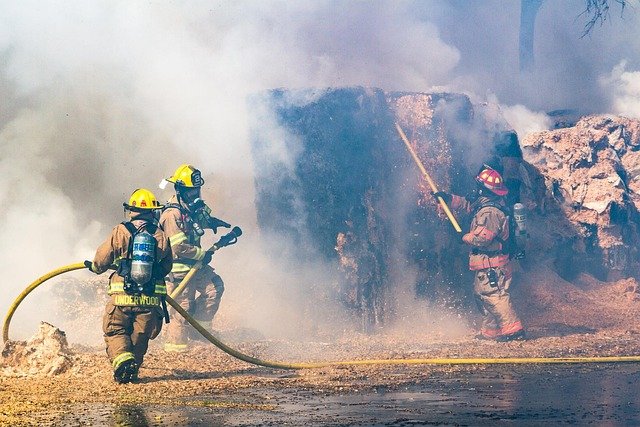Storm Shelters & Bunkers: Practical Home Safety for Tornadoes and Hurricanes
A storm shelter or bunker can be the difference between a close call and a lifesaving refuge when severe weather strikes. Understanding what type of shelter fits your home, how shelters address specific threats like tornadoes or hurricanes, and how to maintain and plan for use are essential parts of home safety and weather protection. This guide breaks down the essentials so you can make informed choices for your family.

What is a storm shelter and how does it work?
A storm shelter is a dedicated, reinforced space—either above ground or below—that’s designed to protect occupants from wind-borne debris, structural collapse, and flooding risks associated with severe storms. Common designs include underground bunkers, reinforced concrete rooms, and above-ground safe rooms built to resist impact and uplift forces. Functionally, shelters minimize exposure to flying debris, provide a stable envelope against pressure changes, and supply a controlled, enclosed refuge until the threat passes.
Proper design addresses structural strength, secure doors, and ventilation. For many homeowners, the decision between an above-ground safe room and a below-ground shelter depends on site conditions, flood risk, accessibility, and local building codes. Consulting trained installers and local services can help ensure a shelter meets both safety needs and regulatory requirements in your area.
How do storm shelters improve home safety?
Shelters enhance home safety by offering a designated, survivable space during extreme weather events. Integrating a shelter into an emergency plan reduces confusion and speeds decision-making when a tornado warning or hurricane evacuation order is issued. Well-equipped shelters also store emergency supplies—water, food, first-aid kits, communication devices, and lighting—so occupants can remain self-sufficient for several hours.
Beyond physical protection, shelters can reduce anxiety by giving families a clear, practiced response path. Regular drills, marked routes inside a home, and maintaining a basic emergency kit contribute to improved readiness. For households with children, elderly family members, or pets, planning around mobility and medical needs is an important part of home safety preparation.
Can a storm shelter protect you from a tornado?
Storm shelters are specifically engineered to address the primary hazards of tornadoes: extreme winds and flying debris. A properly constructed shelter reduces the risk of injury from collapsing rooflines and airborne objects that can penetrate ordinary walls and windows. Placement away from large windows or open façades and anchoring to a stable foundation are typical considerations to withstand lateral and uplift forces.
While no solution eliminates all risk, a certified shelter built to recognized performance standards can materially improve survivability during a tornado. Homeowners should follow guidance from licensed professionals when selecting shelter size, entry design, and anchoring methods. Also consider communication options—battery-powered radios, charged phones, and emergency lighting—so occupants can remain informed while inside.
Are bunkers and shelters effective for hurricanes?
Hurricanes pose a mix of hazards: extreme winds, storm surge, and heavy rain that can lead to flooding. Shelters and bunkers provide weather protection from wind and debris, but their effectiveness against hurricane-related flooding depends on location and design. Above-ground safe rooms are helpful in wind-only scenarios, while below-ground shelters may offer superior protection from debris but could be compromised by flooding if not waterproofed or elevated properly.
When hurricanes are forecast, planning should integrate evacuation recommendations, local flood risk, and shelter placement. In flood-prone areas, consider elevated or specially sealed shelters and consult local services about flood-resistant installations. Ensuring that a shelter’s access remains usable—dry and free from debris—during heavy rain can be as important as the shelter’s structural strength.
How to choose, install, and maintain a shelter for weather protection
Choosing the right shelter begins with assessing your property’s risks: tornado-prone zones, hurricane exposure, floodplain status, and the physical constraints of your lot. Work with reputable local services and licensed installers who can advise on permits, code compliance, and proper anchoring. Material choices—reinforced concrete, steel, or composite systems—affect durability, maintenance, and installation complexity.
Maintenance is straightforward but vital: check doors and seals, keep ventilation clear, test lighting and communication devices, and rotate food and water supplies periodically. Practice entry and exit routines with household members and ensure the shelter accommodates mobility needs. Finally, include important documents, medications, and basic tools in a grab-and-go bag stored inside the shelter to streamline access during high-stress events.
Conclusion
Storm shelters and bunkers are an important component of a resilient home safety strategy, offering targeted protection against tornadoes, hurricanes, and other severe weather threats. Choosing the right type of shelter requires a clear understanding of local hazards, careful design and installation, and ongoing maintenance. When integrated with a practiced emergency plan and support from qualified local services, shelters can significantly improve the odds that families remain safe and prepared during extreme weather events.






